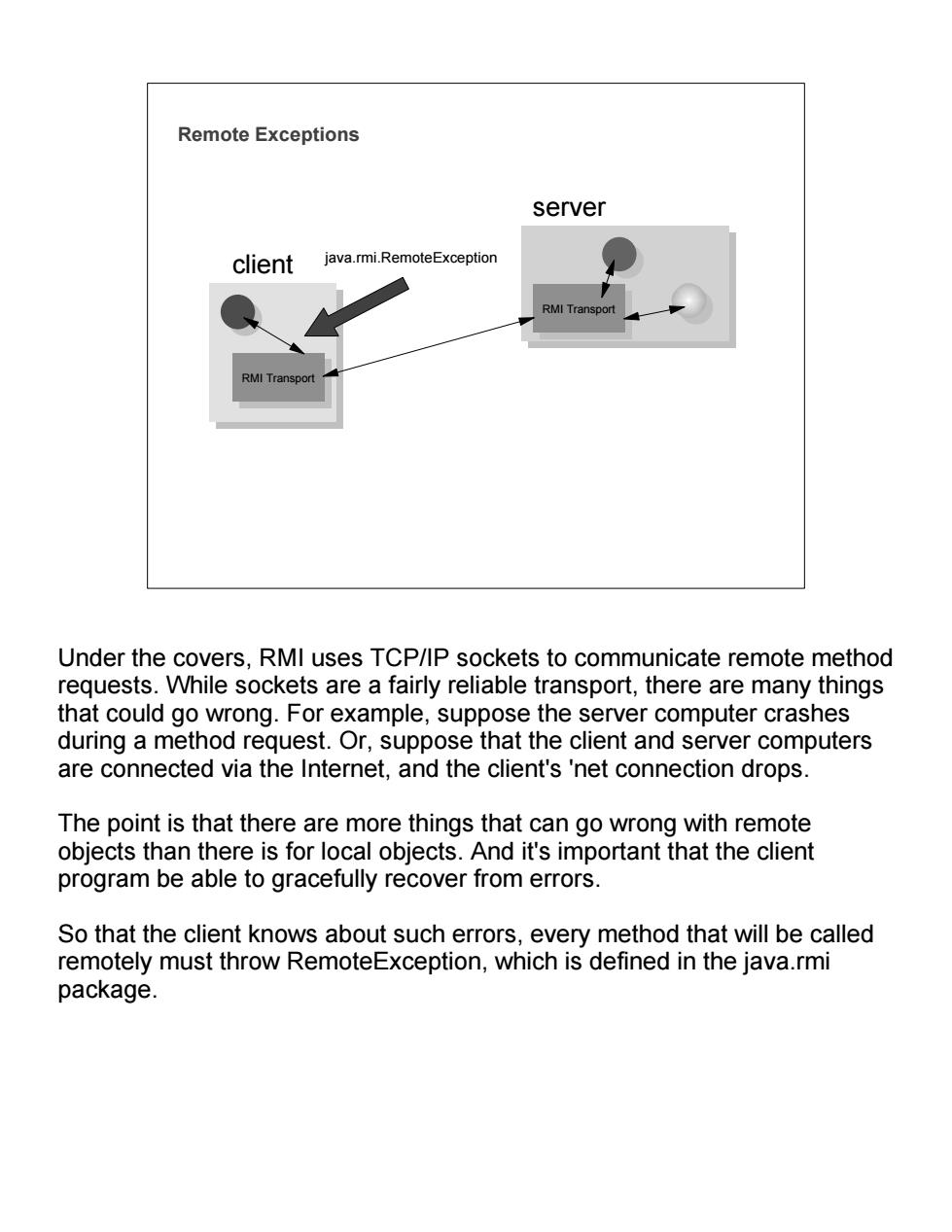正在加载图片...

Remote Exceptions server client java.rmi.RemoteException Under the covers,RMI uses TCP/IP sockets to communicate remote method requests.While sockets are a fairly reliable transport,there are many things that could go wrong.For example,suppose the server computer crashes during a method request.Or,suppose that the client and server computers are connected via the Internet,and the client's 'net connection drops. The point is that there are more things that can go wrong with remote objects than there is for local objects.And it's important that the client program be able to gracefully recover from errors. So that the client knows about such errors,every method that will be called remotely must throw RemoteException,which is defined in the java.rmi package.Remote Exceptions client server RMI Transport RMI Transport java.rmi.RemoteException Under the covers, RMI uses TCP/IP sockets to communicate remote method requests. While sockets are a fairly reliable transport, there are many things that could go wrong. For example, suppose the server computer crashes during a method request. Or, suppose that the client and server computers are connected via the Internet, and the client's 'net connection drops. The point is that there are more things that can go wrong with remote objects than there is for local objects. And it's important that the client program be able to gracefully recover from errors. So that the client knows about such errors, every method that will be called remotely must throw RemoteException, which is defined in the java.rmi package